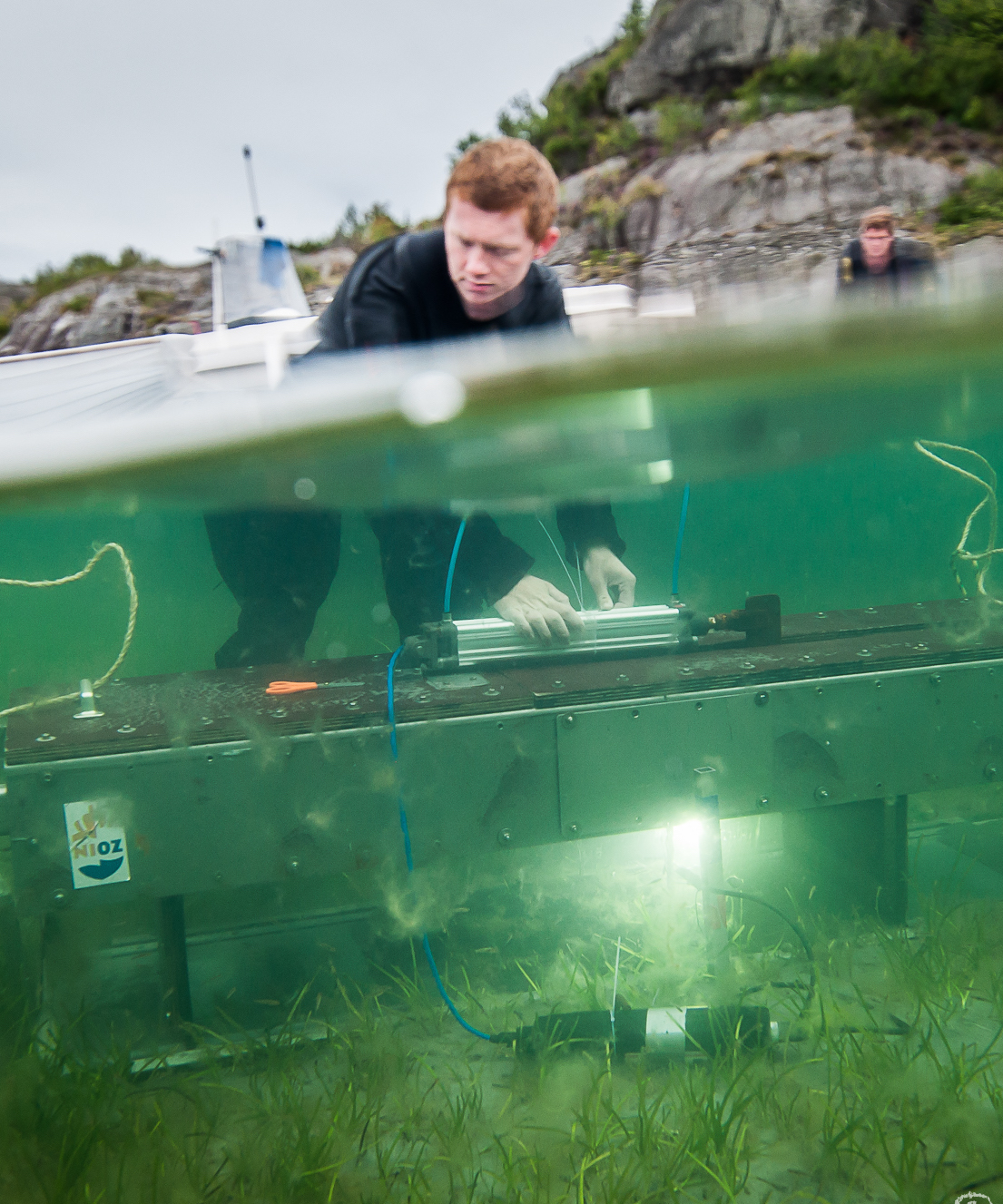Abstract
Seagrass meadows and bare sediment represent alternative stable states, with sediment resuspension dynamics being a key driver of system stability via the Seagrass – Sediment stabilization – Light (SSL) feedback. We explore the SSL feedback stability by quantifying the sediment stabilization by seagrass, to calculate under which conditions seagrass ends up in a turbid environment.
We quantified in-situ sediment resuspension velocity thresholds (ucr) for Zostera marina growing in medium to fine sand, using a field flume inducing near-bed wave motion. ucr was determined for full length shoots, shoots clipped to 0.08 m, and removed shoots. Comparing shoot removal with control measurements on bare sediment indicated that rhizomes did not influence ucr of the top sediment layer.
Overall, ucr followed a positive linear relation with blade area, which became independent for sediment type when normalizing ucr for the resuspension threshold after shoot removal. Comparing measured ucr against natural wave conditions showed that the seagrass meadow at the study site is presently not prone to light limitation due to sediment resuspension. Exploring the effects of changing hydrodynamic conditions revealed that effects of increasing storminess has limited influence on sediment resuspension and thus the SSL-feedback.
Increasing mean wind velocity had a stronger influence on SSL-feedback dynamics by causing more frequent exceedance of ucr. This resulted in an increased tendency towards bi-stability in a fully exposed Z. marina meadow under low initial turbidity pressure, whereas at the study site and a fully exposed Z. marina under high initial turbidity pressure it resulted in increased turbidity pressure on both bare and vegetated sediments.







